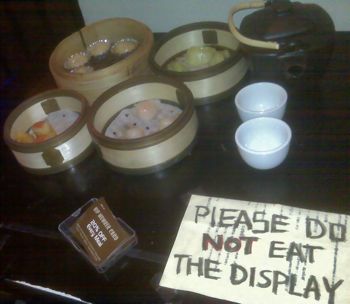A couple of weeks ago on the Christian Century Web site, Edwin Blum reviewed a new book, The History of White People, by Nell Irvin Painter (Norton, March, 2010). In the review, Blum says:
“In the United States, slavery helped define whiteness. In this case, the white race was linked to freedom, whereas blackness was tied to enslavement. Thomas Jefferson and Ralph Waldo Emerson gravitated to the idea that Anglo-Saxons were at the top of the human pyramid. Jefferson admired the myth of Saxon love for liberty and of Americans as the true heirs of the Saxons’ political virtue. He admired it so much, in fact, that his University of Virginia had classes in the Anglo-Saxon language. Emerson, according to Painter, became the ‘philosopher king of American white race theory’ because of his undying love for Anglo-Saxonism. Emerson saluted the Saxons for embodying manliness, beauty, liberty and individualism.”
Now Unitarian Universalists claim both Thomas Jefferson and Ralph Waldo Emerson as our co-religionists, and we tend to claim them as thinkers who continue to inspire us, and who are central to our Unitarian intellectual heritage. Some of us have been critical of Jefferson’s actions as a slaveholder, but in general we have been content to adopt both Jefferson’s and Emerson’s theories of individual liberty and freedom without much in the way of critical reflection about what, exactly, they meant by liberty and freedom for individuals.
This is analogous to what happened in the House of Representatives recently. House Republicans, under the influence of a theory that we should follow the U.S. Constitution exactly as it was originally written, decided that they would read the U.S. Constitution in its entirety at the opening of the current session. Except that they left out all the bits about slavery and slaves being equivalent to three fifths of a human being. This is disingenuous of them, because when you read the original U.S. Constitution, you become quite clear that uncritical acceptance is not an option.
I’m not particularly well-read in Emerson, and can’t comment intelligently on his racial attitudes. But I am pretty well-read in his disciple Henry David Thoreau, and Thoreau is quite sure that white people like him are superior to, e.g., Irish, French Canadians, and working class people of the same narrow ethnic background as himself. If you indulge in an uncritical acceptance of Thoreau’s individualistic mystic theology and his philosophy of government, which is also highly individualistic, you’re going to indulge in a tendency to cover over how both his theology and philosophy are grounded in a hierarchical theory of race. And I’m pretty sure that I’d find similar problems in Emerson’s philosophy and theology.
I don’t mean to imply that we should discard Emerson and Jefferson; they are too central to our intellectual heritage to discard. But I do want to suggest that it’s past time for a serious revision of our understanding of Emersonian and Jeffersonian individualism within a Unitarian Universalist context.


